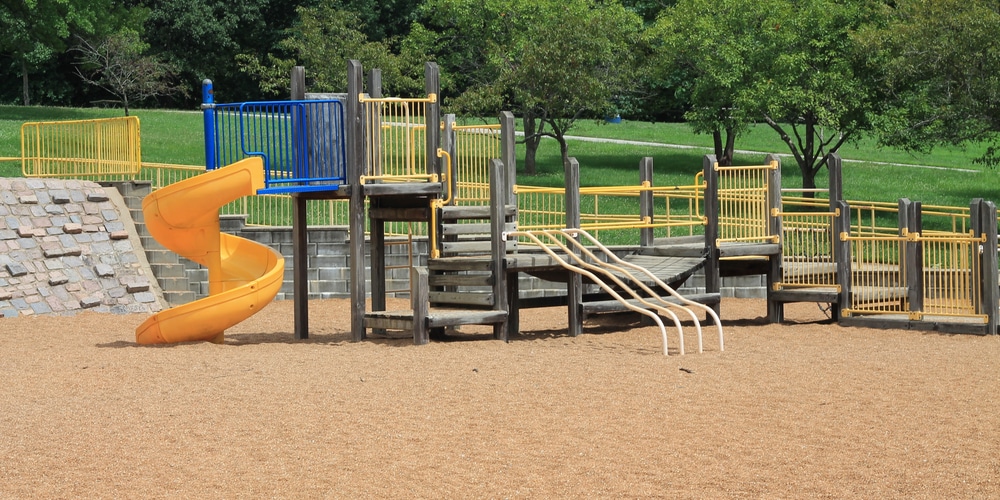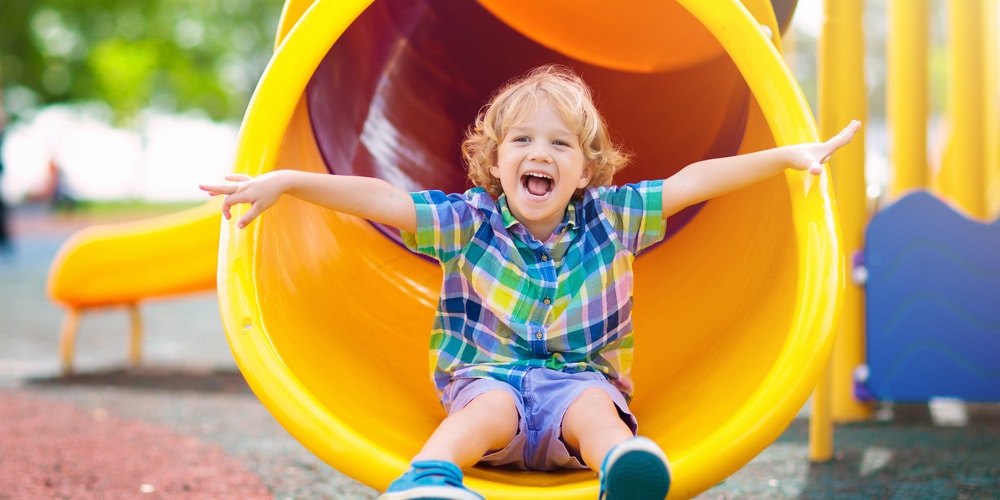Children need lots of room for creative play and enjoy running and climbing. Sometimes, it is hard to find a place that can accommodate kids’ energy. If your child loves running, jumping, and playing with their friends outside, then you should consider getting them a playground at home or in the neighborhood where they can be active.
Is a pea gravel playground the answer? Pea gravel has been used as a substitute for sand, concrete, or grass at playgrounds even though it causes some problems.
Let’s look at the benefits and disadvantages of using pea gravel in a playground rather than other materials.
Is a pea gravel playground safe?

Many parents are worried about the safety of a play area with pea gravel, and research found that there were significantly more injuries from falls on this surface rather than others. Here are the pros and cons of pea gravel:
Benefits of a pea gravel playground:
Pea gravel playgrounds can be more affordable than most other materials for a playground surface. This type of gravel is cheap and comes in many different colors, from white and cream to different shades of brown, grey, or black.
A playground made from pea gravel is easy to build and maintain. The material is easy to install and doesn’t have to be watered down after installation. This is useful as it does not create puddles of water that could be a slip hazard.
Disadvantages of a pea gravel playground:
Pea gravel is a choking hazard and can be swallowed by very young children. This could cause serious health problems for them, which is why it should not be used in play areas for young children.
The pea gravel gets stuck in the shoe of a child, making it difficult to walk or run. This can cause injury and frustration for the child and the parents who often find themselves picking stones from their children’s shoes.
Pea gravel is also very uncomfortable on bare feet so it shouldn’t be used in areas where children are likely to be playing without shoes, such as near a swimming or paddling pool.
- Strained wrist and shoulders from digging in pea gravel. If children have been digging, they may leave small holes, which can be a tripping hazard.
- Injury from falls on the rough surface of pea gravel. It shouldn’t be used under equipment such as swings or slides where children may fall over.
- Slowed motor skills development because some children do not want to touch the gravel with their hands.
- Not good for competitive games like soccer.
- Can be washed away by heavy rain or heavy foot traffic if not stabilized correctly
What type of material is best for a playground?

A playground with a surface made of rubber mulch is more expensive, but it may be the best material for both safety and comfort. This material can also help to improve motor skills development by increasing balance through contact with the ground.
Your child may not like to touch this type of material because it feels funny on their hands or feet, but it is the best surface to avoid injury. The biggest benefit of rubber ground is that it can be used for many years. It isn’t affected by heavy rain or accidental spills. This material is also more environmentally friendly than others as recycled rubber is available.
Another option is wood chips. This material is soft for children when they fall, but it can be quite slippery in the rain or after a fresh rain so it should be used with caution.
The best materials for the comfort and safety of your child include rubber mulch and wood chips. For the best of all worlds, try a combination of these materials, including pea gravel, for specific areas on your playground where children’s bare feet will not touch it.
Conclusions
Pea gravel playgrounds can be unsafe, uncomfortable, and difficult to clean compared with other surfaces. It is recommended that they should not be used as a playground material. They can also cause injuries for kids. Although it is cheaper than other materials, its apparent downsides might not be worth the potential savings.
Pea gravel is best left to patios and walkways, as it can be difficult to stabilize and offers virtually no cushion whatsoever.
Some of the best materials for a playground include rubber mulch, pavers, and wood chips. For convenience and comfort, these options create a pleasant space for children to play on.